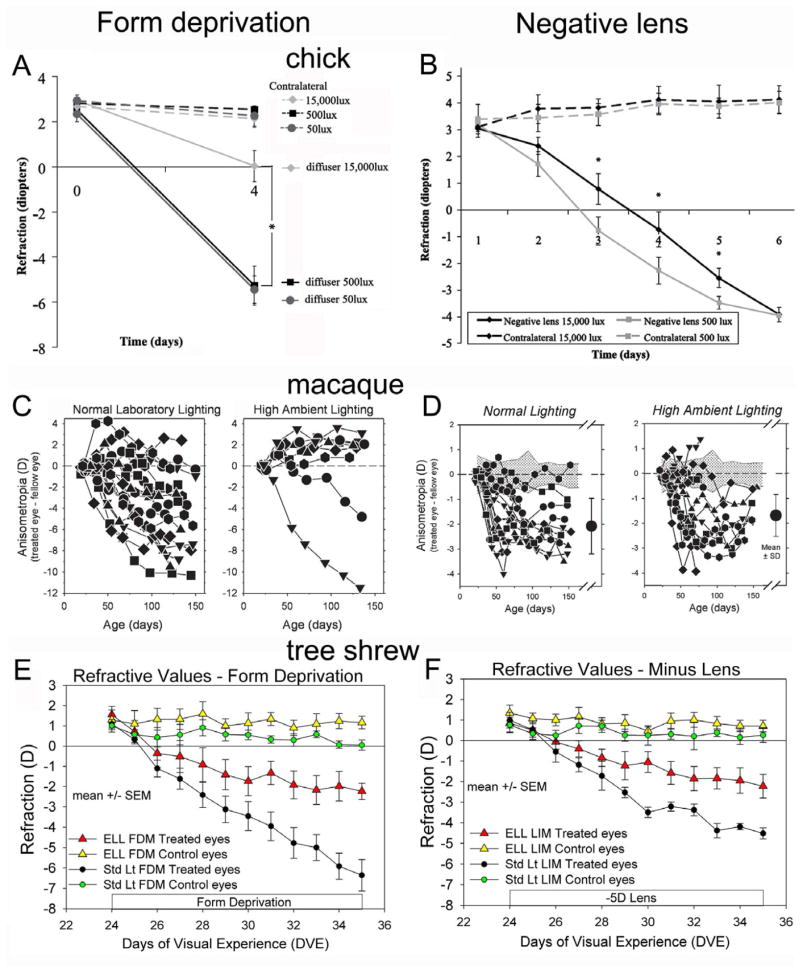Fig. 1.
Effects of “elevated” light levels (“high ambient lighting”) on the response to form deprivation and negative (minus) lens wear in chick (Ashby et al., 2009; Ashby and Schaeffel, 2010), macaque monkey (Smith et al., 2012; Smith et al., 2013), and tree shrew (Siegwart et al., 2012). A, C and E: In all three species, “elevated” light levels (ELL) slowed the rate of myopia development in response to form deprivation when compared with standard (200 – 600 lux) colony lighting. B and F: In chicks and tree shrews ELL slowed the initial rate of negative lens-induced myopia. In macaque monkeys (D), no effect from elevated light levels was found. Chick: A. refractive values for the treated and the control eyes exposed to 50 lux, 500 lux or 15,000 lux for 6 h per day. B. exposure to 500 or 15,000 lux for 5 hours per day; Macaque: the refractive difference (treated – control eyes) of animals exposed colony lighting or to to 18 – 28,000 lux from metal halide lamps (filtered to remove wavelengths below 360 nm) for 6 h per day. Tree shrew: treated and control eye refractive values comparing animals exposed to “standard” colony lighting (100 – 300 lux) or elevated light levels (ELL): 15,000 lux from compact fluorescent lamps for 7.75 h per day. In tree shrews, the untreated control eyes in both ELL groups were hyperopic compared with control eyes in standard colony lighting. A, B, C, and D, copyright Association for Research in Vision and Ophthalmology. Reproduced with permission.

